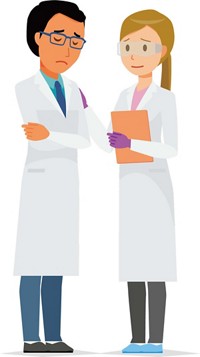Advertisement
Grab your lab coat. Let's get started
Welcome!
Welcome!
Create an account below to get 6 C&EN articles per month, receive newsletters and more - all free.
It seems this is your first time logging in online. Please enter the following information to continue.
As an ACS member you automatically get access to this site. All we need is few more details to create your reading experience.
Not you? Sign in with a different account.
Not you? Sign in with a different account.
ERROR 1
ERROR 1
ERROR 2
ERROR 2
ERROR 2
ERROR 2
ERROR 2
Password and Confirm password must match.
If you have an ACS member number, please enter it here so we can link this account to your membership. (optional)
ERROR 2
ACS values your privacy. By submitting your information, you are gaining access to C&EN and subscribing to our weekly newsletter. We use the information you provide to make your reading experience better, and we will never sell your data to third party members.
Lab Safety
Opinion
What I learned from my lab accident
Researchers should feel empowered to improve safety culture before accidents happen
by Francesca Lorandi, special to C&EN
June 17, 2022
| A version of this story appeared in
Volume 100, Issue 22

In February of this year, I was injured in an accident in a chemistry laboratory. I had set up an experiment that involved the separate use of hydrogen and oxygen gases fed into a glove box from compressed cylinders located in the lab. Though this was a well-established experimental procedure in my research group, something caused an explosion. The specific cause of the accident is still under investigation.
When the explosion occurred, the experiment had been paused for a few hours, and I was standing by the glove box. I spent 7 days in the hospital undergoing surgery for wounds on my face and neck and getting splints and implants for dental trauma. A neck fracture meant I had to wear a brace for 2 months. There are also invisible consequences that I’m still discovering day by day. I’m not confronting them on my own: I ask for help or talk to my partner, family, mentors, friends, and colleagues.
The accident triggered extensive discussions at my institution about safety measures in all the departments that conduct potentially hazardous experiments. Department heads and safety services are implementing changes. Importantly, these changes are aimed at germinating a culture of safety rather than just implementing stricter regulations and promising compliance.
Other institutions should not wait for a severe accident to happen before taking similar action. Regulations must not be written in blood; we already have the tools to prevent accidents from happening.
My colleagues and I often perceive any safety-related matter as subtracting precious time from our research—and forget that being able to assess risks associated with substances and procedures is an integral part of our job. The procedure I was performing was clearly hazardous, but no one had ever captured it in a standard operating procedure (SOP) with a dedicated risk assessment. It is hard to say whether an SOP would have helped prevent this accident. But it could have made my colleagues and me more aware of the possible risks and increased our understanding of the experiment and chemistry behind it.
Inspections are another measure that can make labs safer. I spent over 3 years as a postdoc in the US before returning to Italy, my home country, in the summer of 2021. At my US institution, the environmental health and safety team conducted periodic inspections. To be ready, our research group established lab cleaning days, which were followed by internal inspections conducted by researchers designated as safety officers. We discussed every issue during group meetings. It was clear that the purpose of both types of inspections was not punishment but prevention and education.
Unfortunately, such inspections, along with hazard-specific safety training, are less common at institutions outside the US. Many researchers and academic staff simply do not know where to find information about specific risks, mitigation procedures, or best practices. As always in our job, a bit of literature search can help! Plenty of useful resources are out there, starting with ACS Chemical Health & Safety (although I admit that I had never read it before my accident). Accident and near-miss reports, lists of practices, and recommendations complemented by surveys and statistics are available for us to read and implement. Lab leaders should also encourage us to share our own experiences to help the community at large.
Principal investigators are not the only people who can act on safety issues. Students and young researchers are the most vulnerable and therefore must be directly involved in lab-safety management. For example, assigning a student the role of safety officer gives them a sense of responsibility that helps overcome the fear of reporting small accidents and hazardous or negligent behaviors. Some departments have instituted safety teams led by student researchers, the main objective being to foster effective safety communication and strengthen the safety culture within the institution. Such teams can be amazing opportunities for young researchers to make sure their voices are heard.

Researchers at any career stage must constantly strive for improved safety practices and culture. They must oppose positions that are a threat to safety, such as, “It was done this way for years and nothing happened” or “That stuff is not so bad; you just need to know how to handle it.” And institutional and departmental leaders need to ensure researchers have support and resources they can rely on to work safely.
Francesca Lorandi is a researcher developing materials for energy-storage devices at the University of Padova’s Department of Industrial Engineering. The views expressed here are hers, not those of the university.
Do you have a story you want to share with the chemistry community? Send a submission of about 800 words to cenopinion@acs.org.




Join the conversation
Contact the reporter
Submit a Letter to the Editor for publication
Engage with us on Twitter